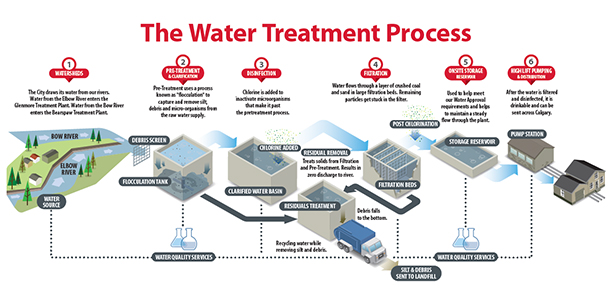Drinking water and water treatment
Calgary has two water treatment plants that take water from the Bow and Elbow rivers. See where our water comes from on Calgary's Water Supply.
Water that has not yet been treated is called raw water. Treating raw water makes it safe for us to drink.
Our water treatment plants make sure Calgary produces safe, high quality drinking water 24 hours a day, 365 days a year.
We use control systems to monitor and optimize flows and various processes to make sure underground reservoirs store enough drinking water to meet our city’s demand.
Water quality
Water Treatment Homeowner Guide
Our water treatment system
The City works to ensure all Calgarians have a safe and reliable supply of drinking water. Calgary's water treatment plants operate 24 hours a day, 365 days a year.
Operators, electricians, maintenance, the laboratories and administrative employees all work together to ensure the integrity of our drinking water.
The Bearspaw Water Treatment Plant draws water from the Bearspaw Reservoir on the Bow River. The Glenmore Water Treatment Plant draws water from the Glenmore Reservoir, which is fed by the Elbow River.
To learn more, visit our Online Water Treatment Tour.
Are you a student? Find more water facts and information about Calgary's water systems at Water Education Resources.


